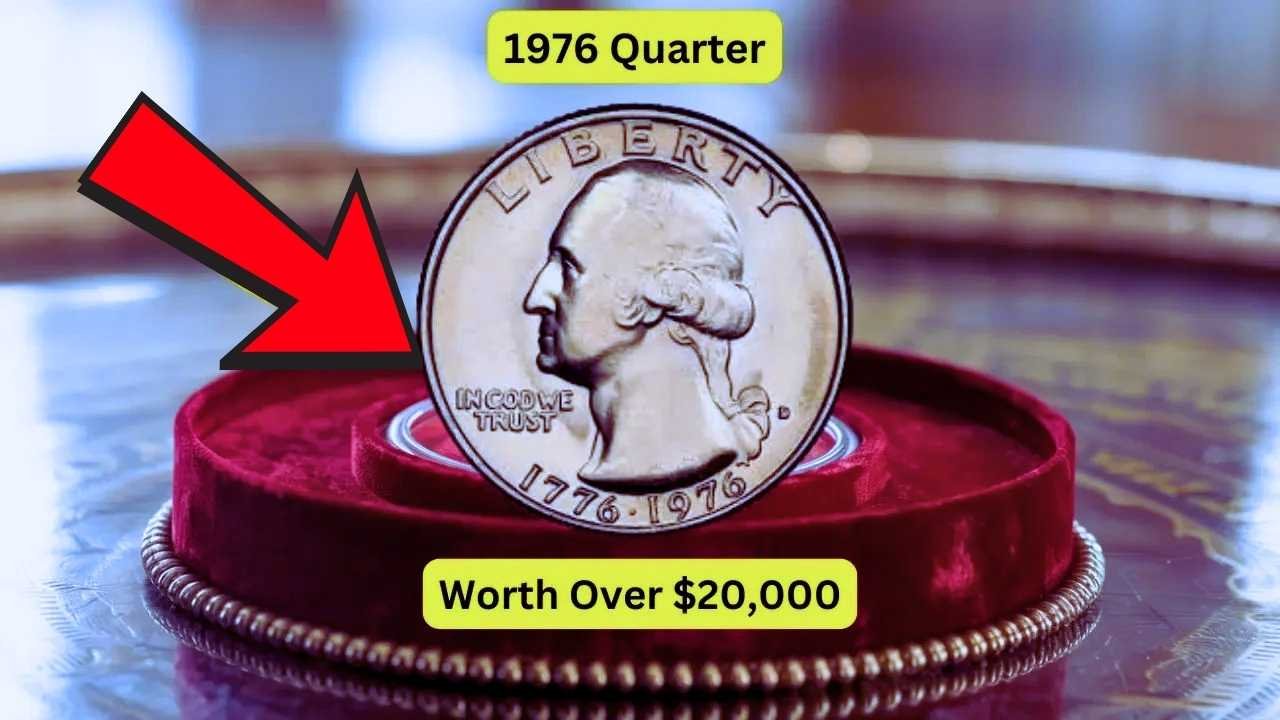A tiny piece of pocket change from 1976 could be worth a fortune. The 1976 Bicentennial Quarter, made to celebrate America’s 200th birthday, is catching the attention of coin collectors everywhere. While most of these quarters are worth just 25 cents, a few rare ones can fetch up to $20,000 at auction. Here’s why this quarter is so special and how you can spot one.
Why Is This Quarter So Valuable?
The 1976 Bicentennial Quarter was minted in huge numbers—over 1.6 billion were made. But a small batch has unique features that make them stand out. These rare quarters were struck with errors or special materials, driving their value sky-high. For example, some were made with a silver alloy instead of the usual copper-nickel mix. Others have minting mistakes, like double-struck designs or missing letters, which collectors love.
Collectors also chase these coins because of their historical meaning. The quarter’s design, with a colonial drummer on the back and dual dates (1776-1976), marks a big moment in U.S. history. Finding a rare version feels like owning a piece of that story. Demand for these coins has grown, especially as more people learn about their potential worth.
How to Spot a Rare 1976 Quarter
Not every 1976 quarter is a goldmine. You need to know what to look for. Here are the key details:
- Silver composition: Some quarters were made with 40% silver, meant for special collector sets. These weigh about 5.75 grams, heavier than the standard 5.67 grams.
- Mint errors: Look for double-struck images, misaligned designs, or missing mint marks. These mistakes make the coin rare.
- Mint mark: Quarters with a “D” (Denver) or no mint mark (Philadelphia) can be valuable if they have errors. San Francisco (“S”) silver quarters are also prized.
- Condition: Coins in near-perfect shape, with sharp details and no scratches, are worth more.
Check your coin with a magnifying glass and a scale. If you think you have a rare one, take it to a professional coin grader for appraisal.
| Feature | Standard Quarter | Rare Quarter |
|---|---|---|
| Material | Copper-nickel | 40% silver (some cases) |
| Weight | 5.67 grams | 5.75 grams (silver) |
| Mint Mark | D, P, or S | S (silver) or error marks |
| Value | 25 cents | Up to $20,000 |
Where to Find These Quarters
You might already have a rare 1976 quarter without knowing it. Start by checking your loose change, old piggy banks, or family coin collections. Some people have found valuable quarters in everyday places like cash registers or coin rolls from banks. Estate sales and flea markets are also good spots to hunt for old coins.
If you’re serious about collecting, visit coin shows or online auction sites like eBay. But be careful—always buy from trusted sellers to avoid fakes. Joining a coin club or following collector groups on social media can help you learn more and stay updated on rare finds.
What to Do If You Find One
If you think you’ve got a rare 1976 quarter, don’t clean it. Cleaning can scratch the surface and lower its value. Store it in a protective holder and contact a reputable coin dealer or grading service, like PCGS or NGC. They’ll evaluate your coin and tell you its true worth. If it’s a high-value quarter, you could sell it at auction or to a private collector for thousands.
A Hidden Treasure in Your Pocket
The 1976 Bicentennial Quarter proves that everyday items can hold big surprises. With a little effort and a sharp eye, you could uncover a coin worth $20,000 or more. So, grab your change jar and start looking—you might just find a small fortune hiding in plain sight.
